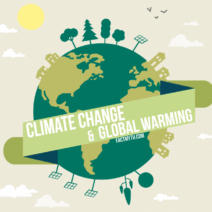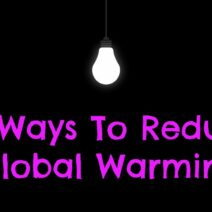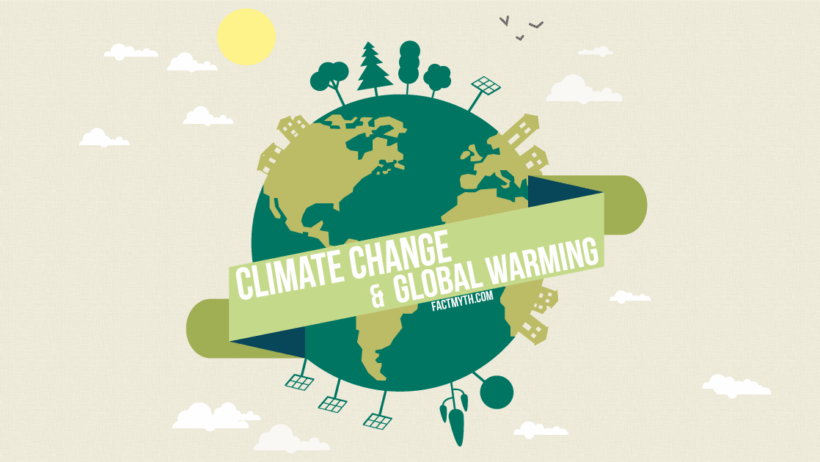The terms “climate change” and “global warming” are often used interchangeably in public discourse, leading to confusion. While they are indeed related concepts, understanding the distinct nuances between the two is imperative for fostering a more informed awareness of our planet’s environmental challenges. This article delves into the intricacies of both phenomena, elucidates their differences, and underscores the overarching significance of each in the context of ecological sustainability.
Defining Global Warming
Global warming refers specifically to the long-term rise in Earth’s average surface temperature due to human-driven factors, chiefly the surge in greenhouse gas emissions. These gases—such as carbon dioxide, methane, and nitrous oxide—trap heat in the atmosphere, creating a “greenhouse effect.” Since the late 19th century, industrialization has exacerbated this effect, with temperatures climbing approximately 1.2 degrees Celsius above pre-industrial levels. Such an increase has profound ramifications, engendering various environmental modifications.
Understanding Climate Change
Climate change, on the other hand, encompasses a broader spectrum of alterations in climate systems over an extended period. This includes shifts in weather patterns, precipitation trends, and sea-level rise, which might occur due to both natural phenomena and anthropogenic impacts. While global warming is a key driver of climate change, the latter also incorporates natural fluctuations, such as volcanic eruptions and solar variations. The differential emphasizes the multifaceted nature of climate dynamics and the complexity of Earth’s environmental systems.
The Interconnectedness of Global Warming and Climate Change
To grasp the relationship between global warming and climate change, one must recognize that global warming acts as a catalyst for climate change. As Earth’s temperatures escalate, manifestations such as more intense storms, droughts, and shifts in biodiversity become increasingly evident. For instance, warmer ocean temperatures contribute to the frequency and severity of hurricanes, while altered rainfall patterns impact agriculture globally. Hence, global warming can lead to abrupt transitions in climate systems, with cascading effects for ecosystems and human societies.
Impacts on Ecosystems
The repercussions of both global warming and climate change are already observable across various ecosystems. Polar regions, which are particularly vulnerable, witness accelerated ice melt, threatening species such as polar bears and seals that rely on sea ice for survival. Furthermore, terrestrial habitats undergo transformations; forests may migrate towards higher altitudes or latitudes, resulting in biodiversity loss. Ecosystems that once thrived are now grappling with the urgency to adapt to these rapid changes—a challenge that often exceeds their physiological and ecological resilience.
Human Implications
The societal ramifications of these environmental shifts are equally daunting. Communities face increased risks of food insecurity as altered weather patterns disrupt agricultural production. In coastal areas, rising sea levels threaten infrastructure and livelihoods, prompting considerations for migration to safer land. The health implications are dire as well, with the spread of vector-borne diseases becoming more pronounced in warmer climates. Globally, the interplay between human health, safety, and environmental integrity underscores the urgency for action.
Addressing the Crisis: Mitigation vs. Adaptation
In response to these pressing challenges, two primary strategies emerge: mitigation and adaptation. Mitigation efforts aim to reduce greenhouse gas emissions and curb the progression of global warming. This can be achieved through renewable energy transitions, energy efficiency improvements, and reforestation initiatives. Contrarily, adaptation strategies focus on enhancing resilience to the changes that are already occurring. For instance, developing drought-resistant crops or constructing flood defenses are critical measures that communities can implement.
The Role of Policy and Collective Action
Effective policy-making is crucial in addressing global warming and climate change. International agreements, such as the Paris Agreement, seek to unite nations in combating these challenges by setting ambitious targets to limit temperature rise to well below 2 degrees Celsius. Moreover, local actions—such as transitioning to green infrastructure in urban development—empower communities to become proactive participants in the climate crisis response. Collective action, driven by awareness and education, propels society toward sustainable practices that mitigate environmental harm.
Conclusion: A Call to Action
In the face of growing evidence and escalating consequences, understanding the distinction between climate change and global warming is more pertinent than ever. Each term encapsulates a specific facet of our interconnected worldly concerns, yet their convergence advocates for a unified narrative: the necessity for immediate and concerted action. From individuals to governments, the responsibility lies in prioritizing ecological integrity, climate resilience, and sustainability for future generations. By acknowledging the urgency of these issues, society can engage in meaningful discussions and initiatives—transforming awareness into impactful change.






